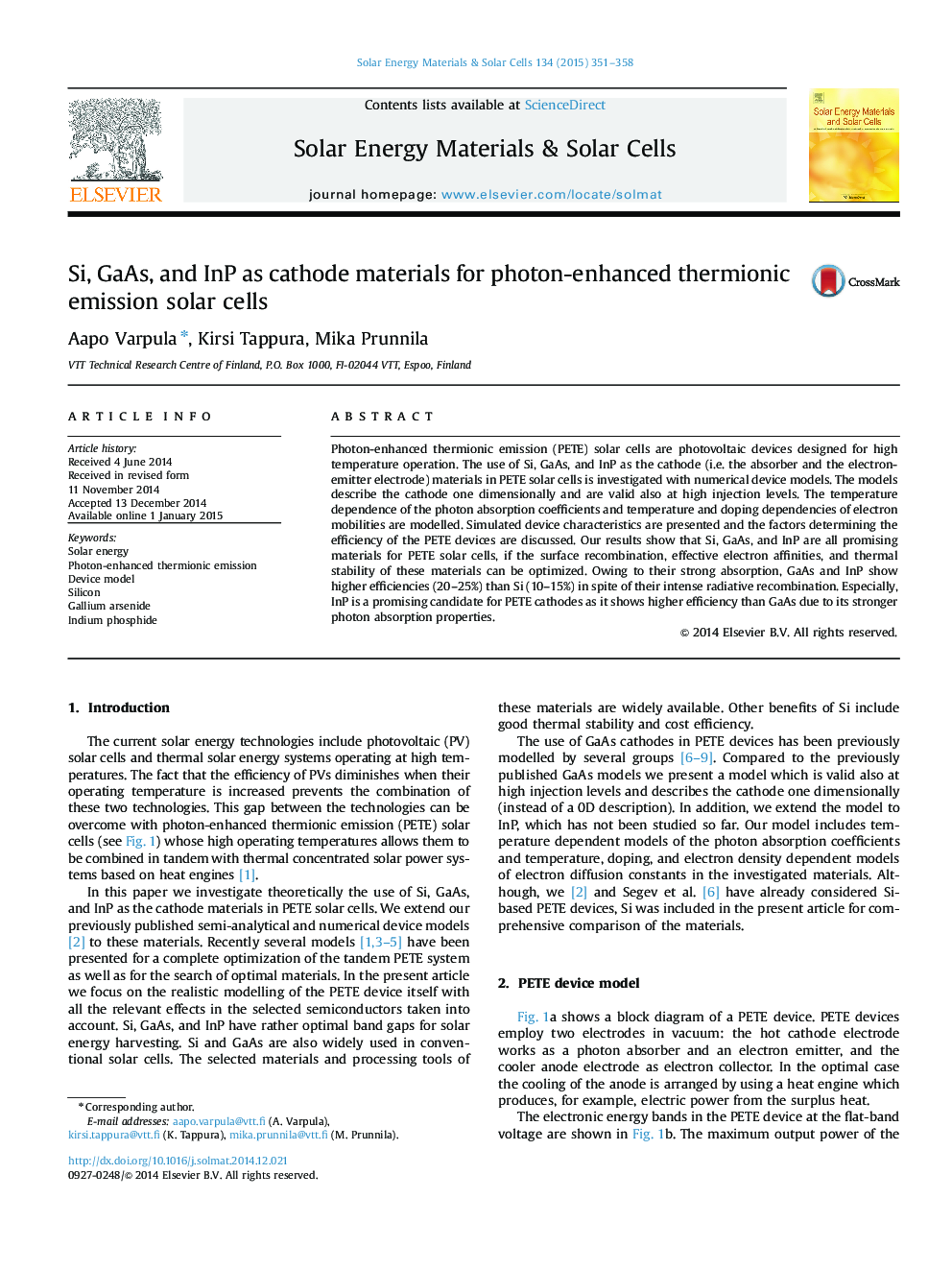| کد مقاله | کد نشریه | سال انتشار | مقاله انگلیسی | نسخه تمام متن |
|---|---|---|---|---|
| 77928 | 49309 | 2015 | 8 صفحه PDF | دانلود رایگان |

• PETE solar cells with Si, GaAs, and InP cathodes are modelled.
• The results show that Si, GaAs, and InP are promising materials for PETE solar cells.
• Owing to the strong absorption GaAs and InP show higher efficiencies than Si.
• Cathode properties, especially electron affinity, influence strongly the PETE performance.
Photon-enhanced thermionic emission (PETE) solar cells are photovoltaic devices designed for high temperature operation. The use of Si, GaAs, and InP as the cathode (i.e. the absorber and the electron-emitter electrode) materials in PETE solar cells is investigated with numerical device models. The models describe the cathode one dimensionally and are valid also at high injection levels. The temperature dependence of the photon absorption coefficients and temperature and doping dependencies of electron mobilities are modelled. Simulated device characteristics are presented and the factors determining the efficiency of the PETE devices are discussed. Our results show that Si, GaAs, and InP are all promising materials for PETE solar cells, if the surface recombination, effective electron affinities, and thermal stability of these materials can be optimized. Owing to their strong absorption, GaAs and InP show higher efficiencies (20–25%) than Si (10–15%) in spite of their intense radiative recombination. Especially, InP is a promising candidate for PETE cathodes as it shows higher efficiency than GaAs due to its stronger photon absorption properties.
Figure optionsDownload as PowerPoint slide
Journal: Solar Energy Materials and Solar Cells - Volume 134, March 2015, Pages 351–358